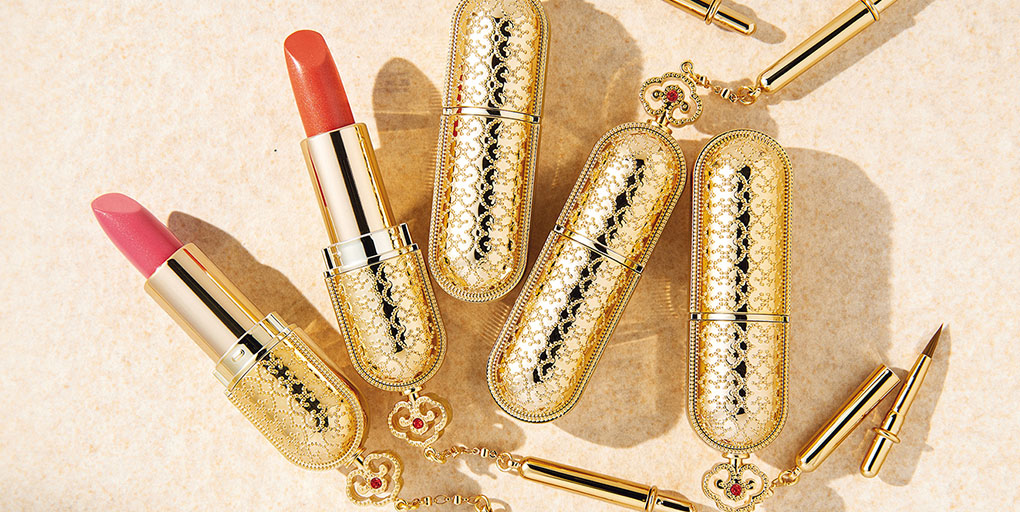



The History of Whoo’s Gongjinhyang Mi (공진향:미) is a premium make-up line with added skincare benefits. The products are inspired by treasured formulas based on traditional Oriental Medicine remedies and beauty secrets.
Disclaimer: I personally translated the majority of facts and contents in this article from original Korean sources, so I kindly ask you to credit my work if you’re planning to use any of the information included in this guide.
Many concepts mentioned in this guide are based on Oriental Medicine principles, for a better understanding please refer to the introduction to Traditional Korean Medicine on this website. It’s important to stress out that there is no correspondence between Oriental Medicine organs and Western anatomy so capitalised names in this article shouldn’t be interpreted in the Western medical sense.

All products in the Gonjinhyang Mi line contain Gongjinbidan (공진비단, 供辰秘丹), The History of Whoo’s signature ingredient based on a traditional royal court formula.
All products from The History of Whoo incorporate Gongjinbidan (공진비단, 供辰秘丹) a proprietary herbal complex that constitutes the core ingredient of the brand.
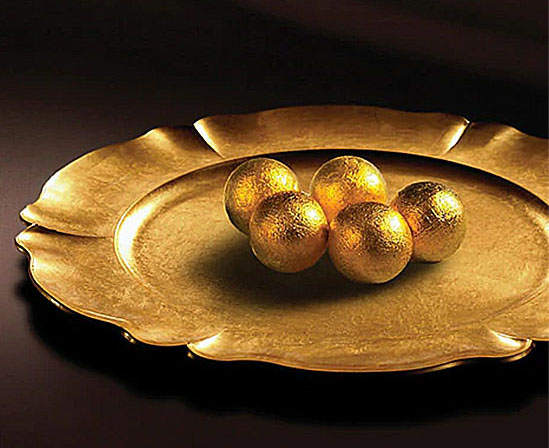
Gongjinbidan is based on Gongjindan (공진단, 拱辰丹), a traditional Oriental medicine prescription originally created by Chinese physician Wei Yilin. According to the classical text or Oriental Medicine “Efficacious Remedies of the Physicians” (세의득효방, 世醫得效方), Gongjindan was a remedy exclusively reserved for emperors and for this reason, it earned the name of “Emperor’s Medicine”1.
Gongjindan appears in many traditional medical texts from China and Korea and it’s described as a remedy that strengthen the body’s immune defenses and brings back the natural balance between its organs.
The Donguibogam (the most representative text of Traditional Korean Medicine) describes the Gongjindan as follows:
If a man is sickly even after growing up, he is constitutionally weak. In such a case, body fluids should be increased but body heat should be cooled down. Other medicines are inefficacious against it, but this medicine is effective to harmonize internal organs with each other and to prevent various diseases.
DONGUIBOGAM (1613)
To this day, Gongjindan is a vital tonic that is still commonly used in many Asian countries to combat chronic fatigue, weak constitution and deteriorated immunity.
Through the integration of modern dermatology, LG Household & Health Care developed a cosmetic ingredient based on the original prescription for Gongjindan: Gongjinbidan.
The Gongjinbidan Complex contains equal amounts of six precious herbal ingredients2, including:


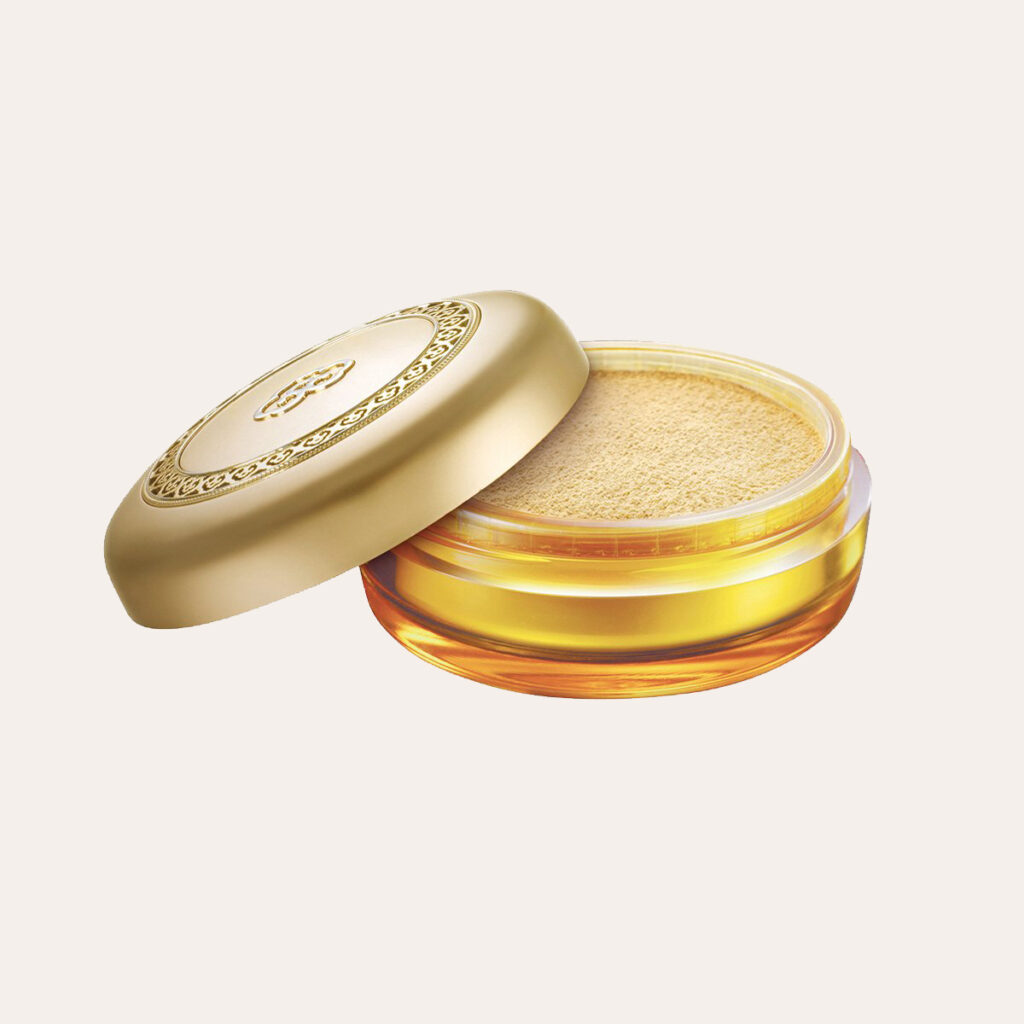
Gongjinhyang Mi Jewelry Powder
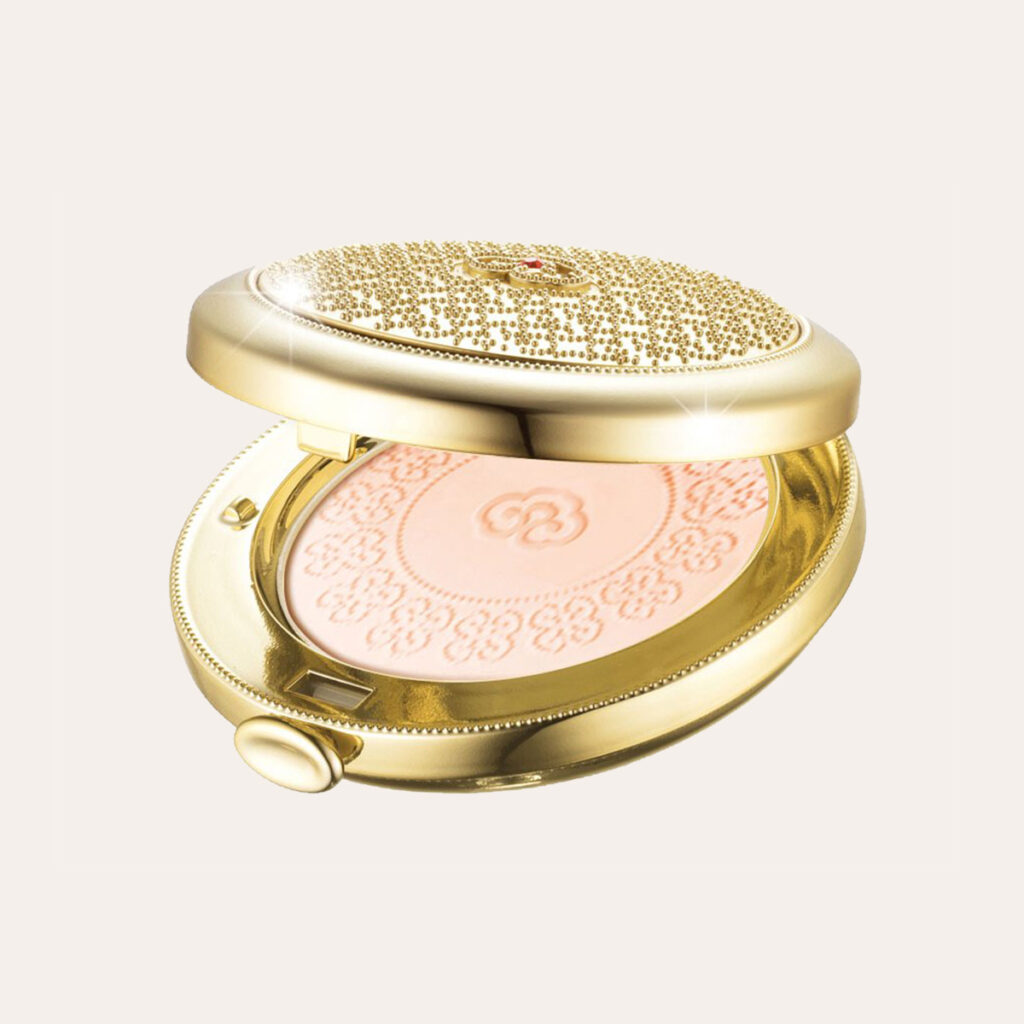
Gongjinhyang Mi Powder Pact
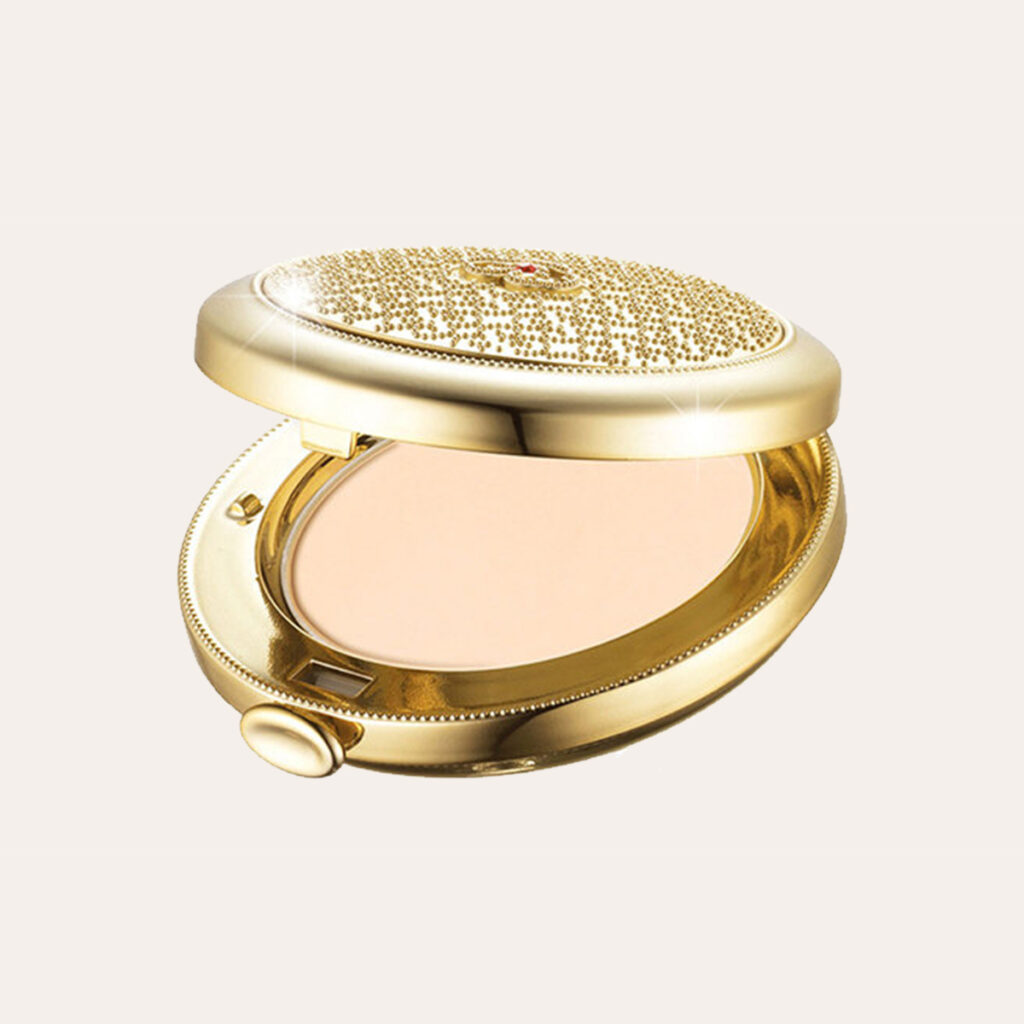
Gongjinhyang Mi Two Way Pact
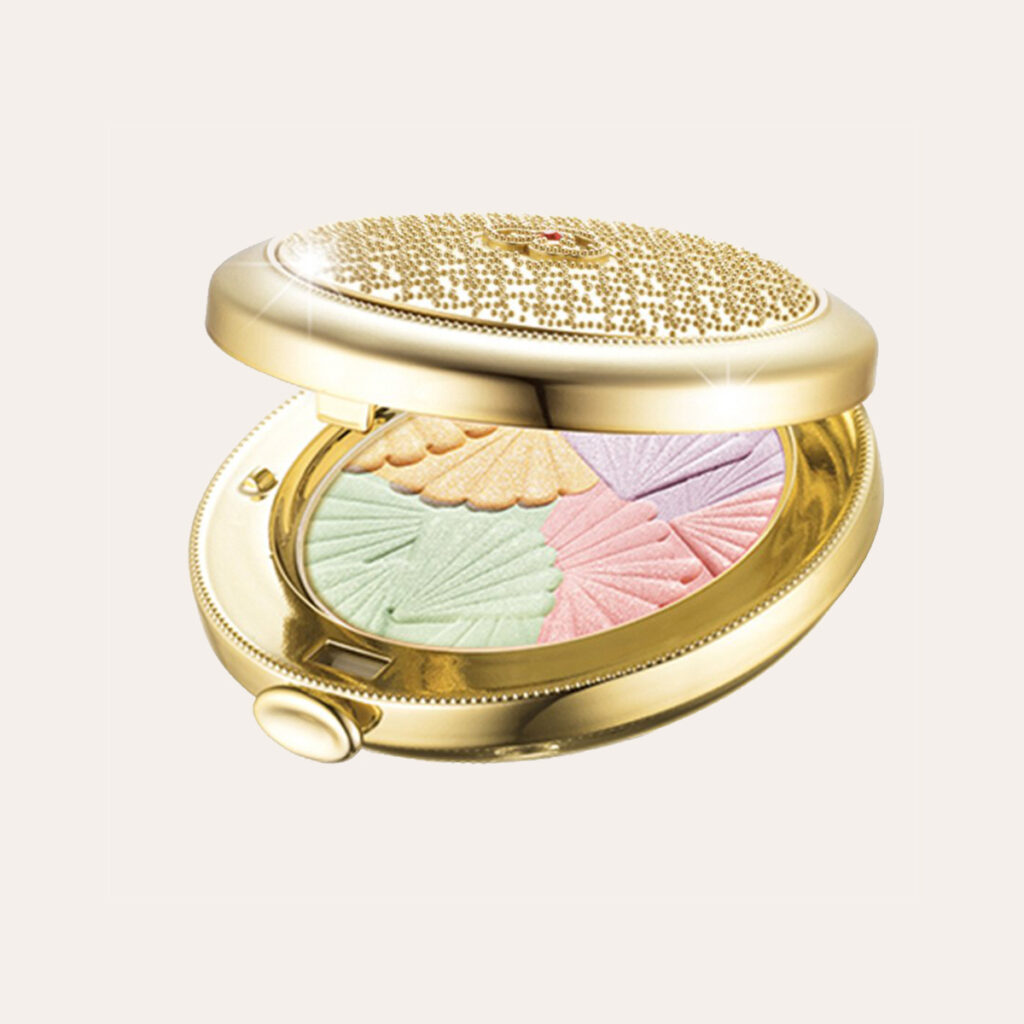
Gongjinhyang Mi Color Pact
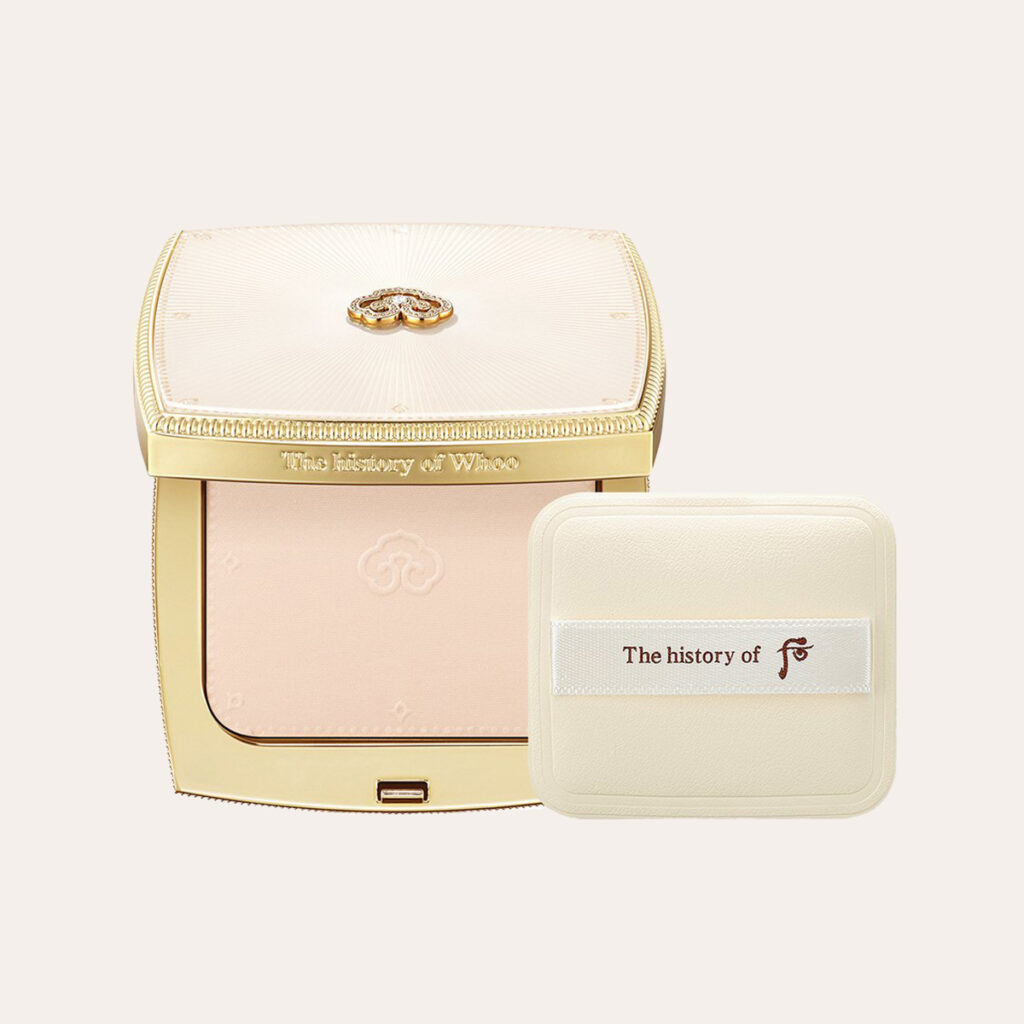
Gongjinhyang Mi Velvet Powder Pact
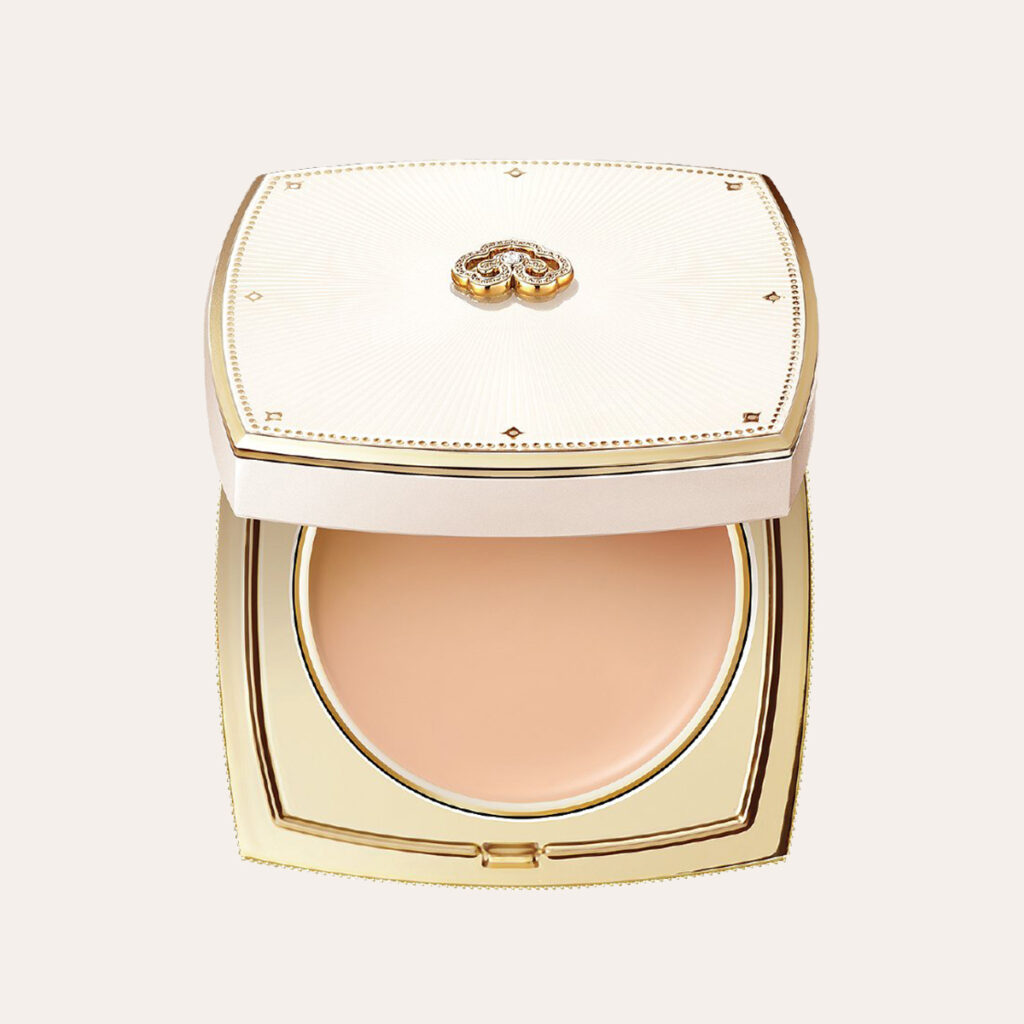
Gongjinhyang Mi Velvet Foundation Pact
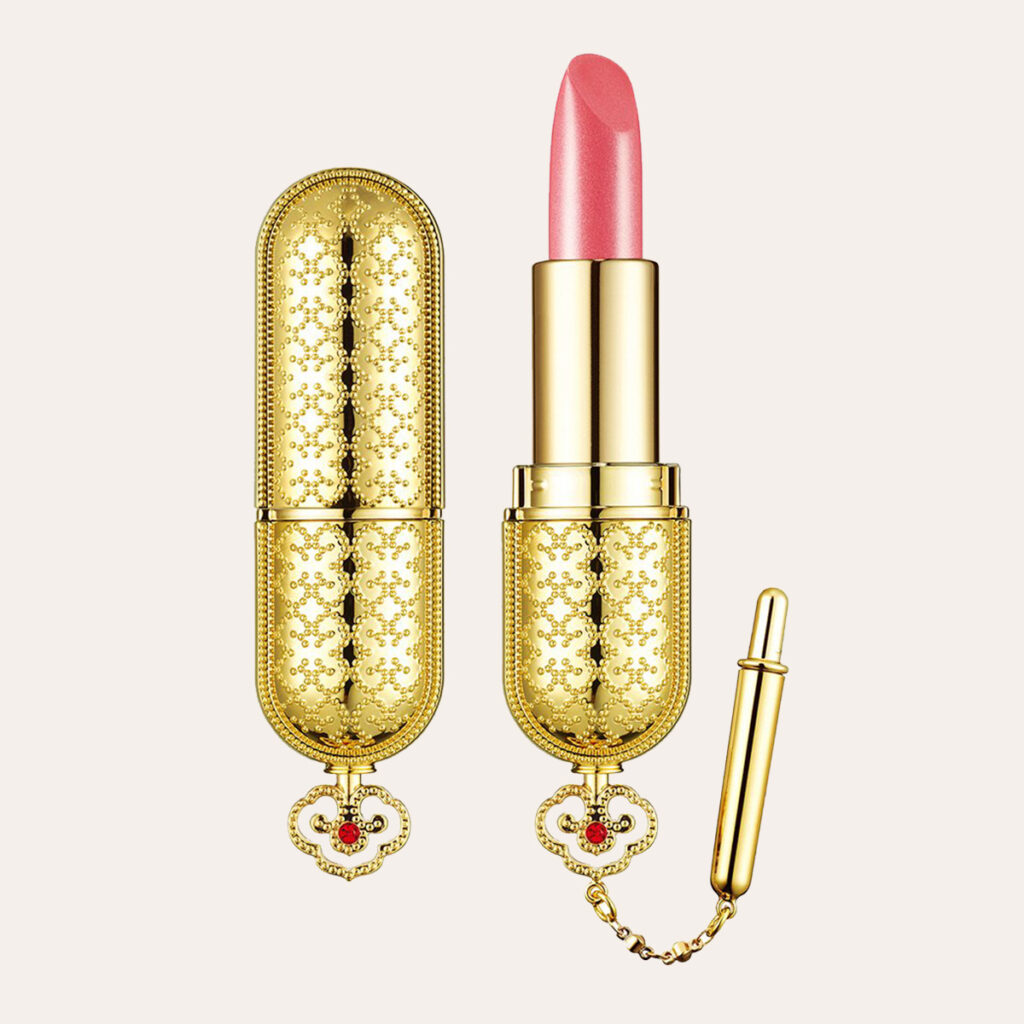
Gongjinhyang Mi Luxury Lipstick
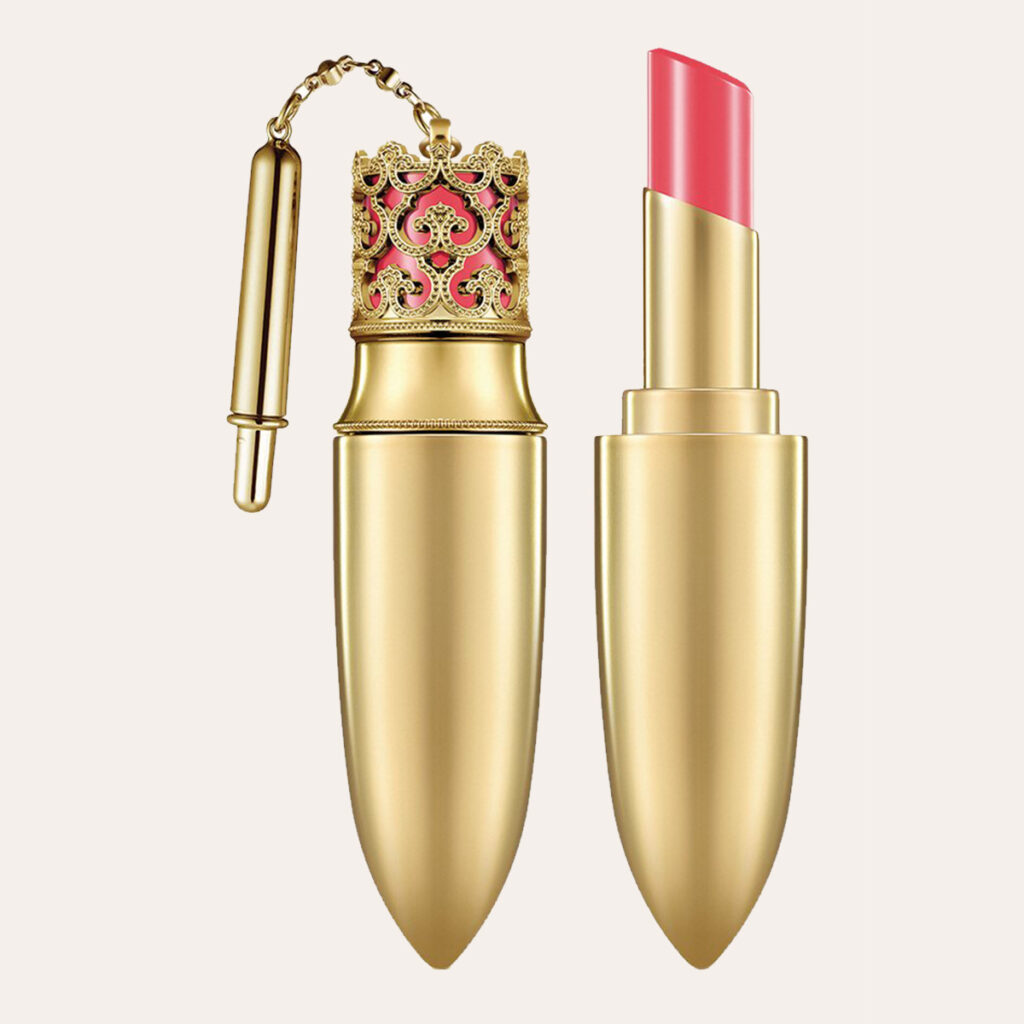
Gongjinhyang Mi Luxury Lip Rouge
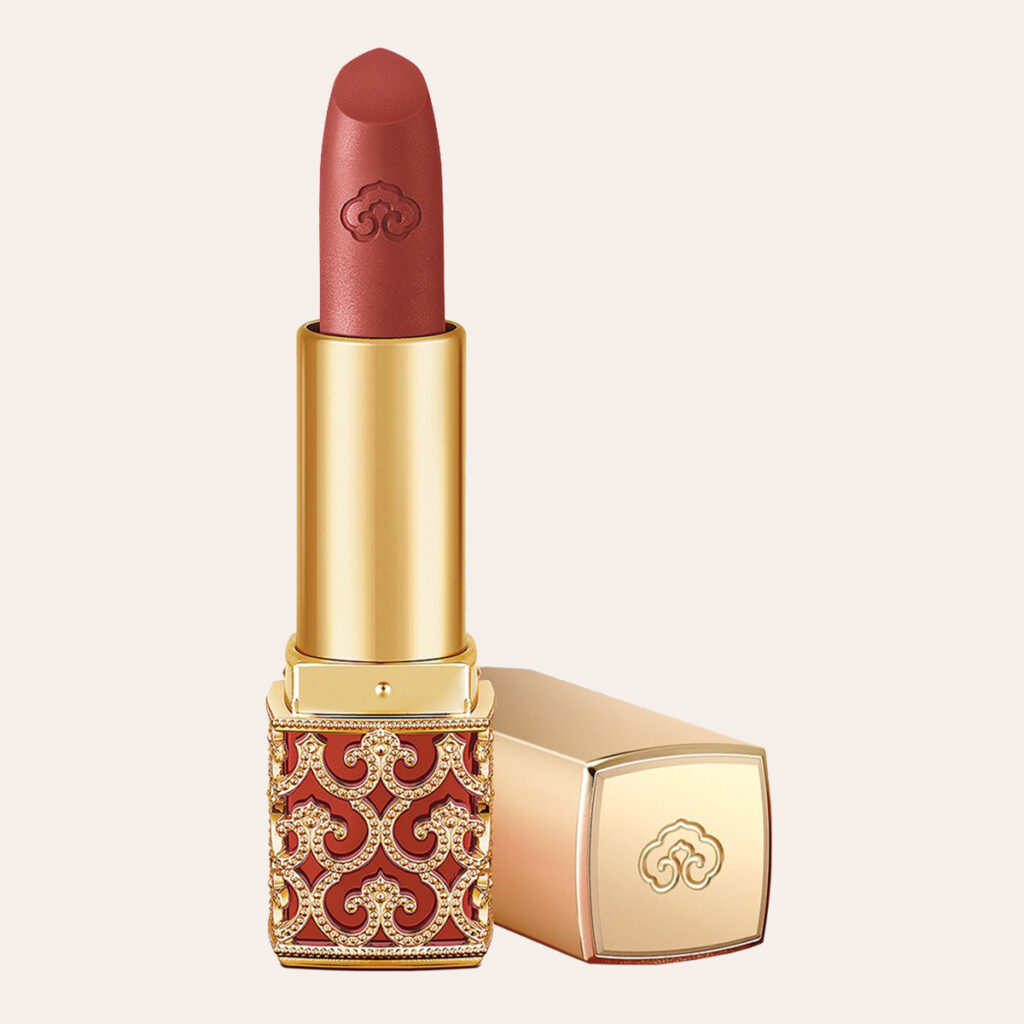
Gongjinhyang Mi Velvet Lip Rouge
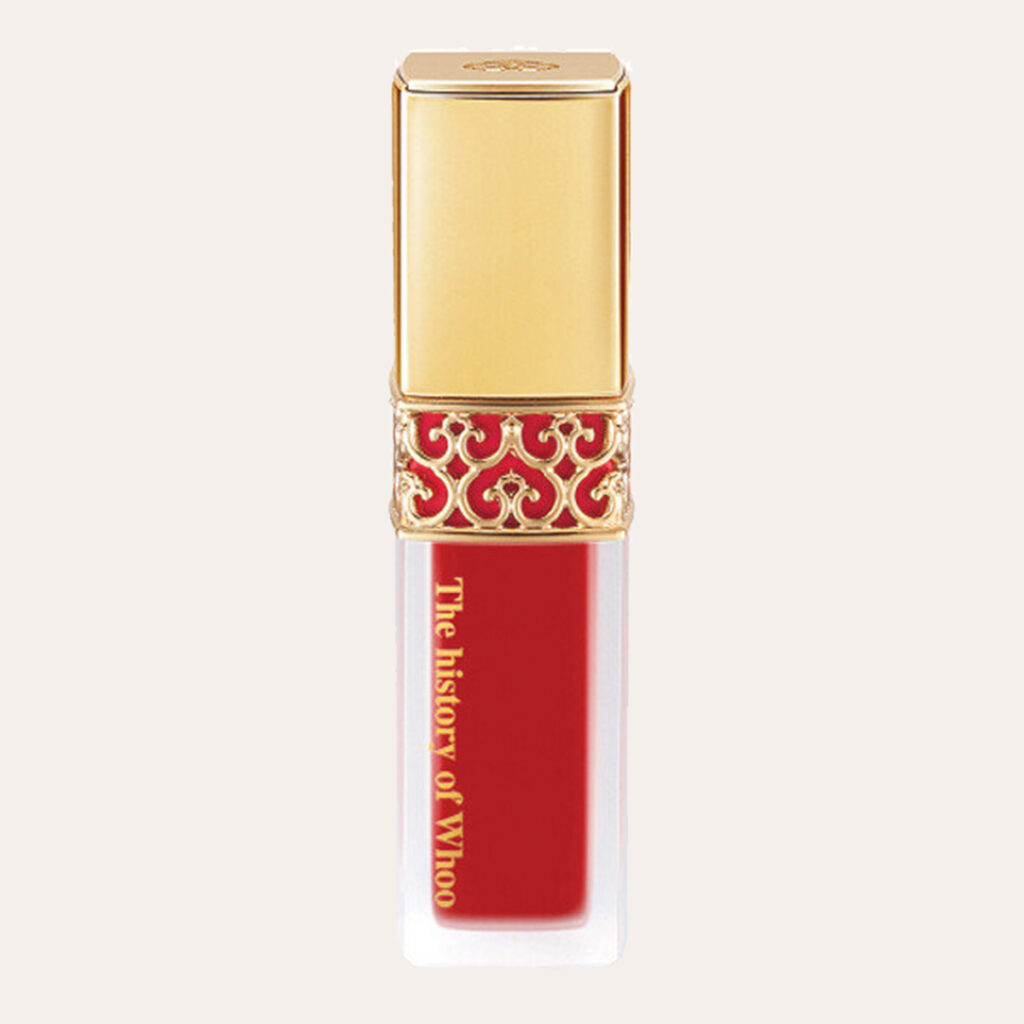
Gongjinhyang Mi Velvet Liquid Lip Rouge
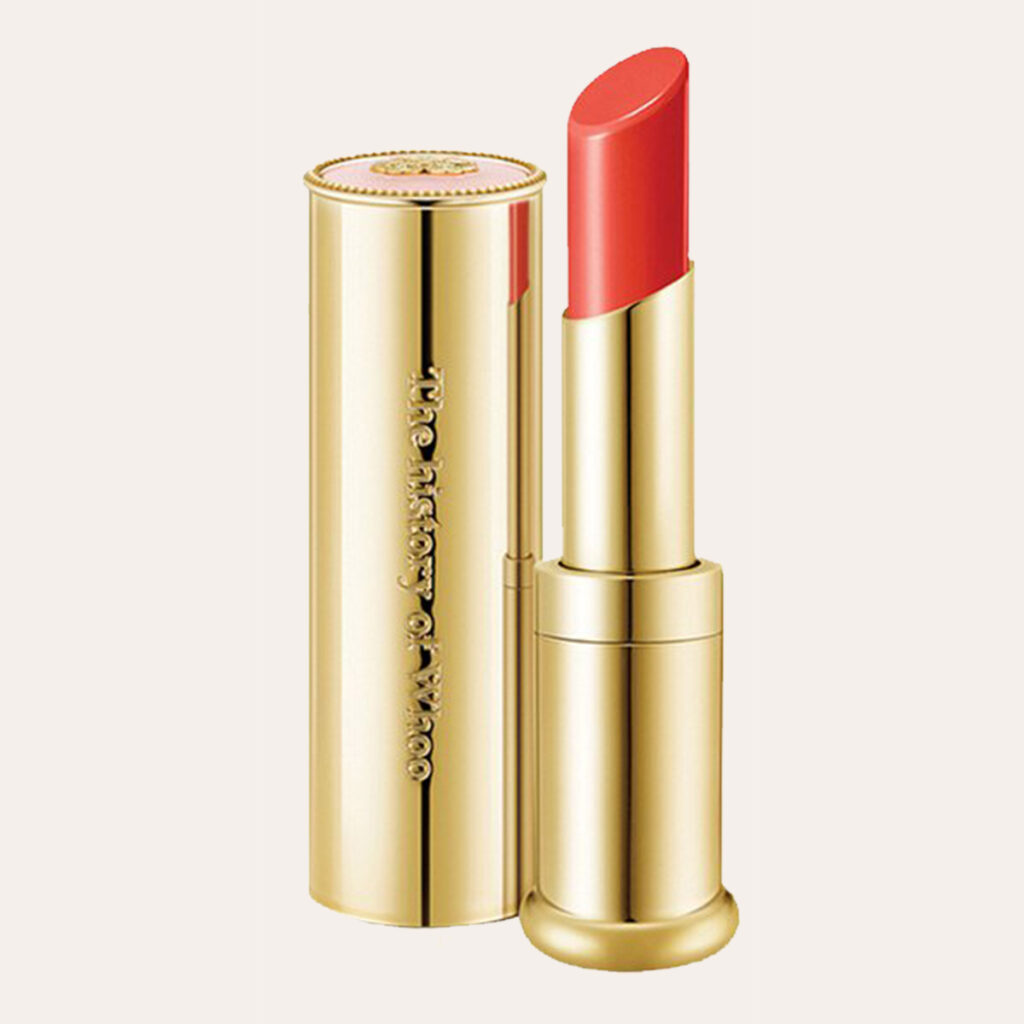
Gongjinhyang Mi Glow Lip Balm
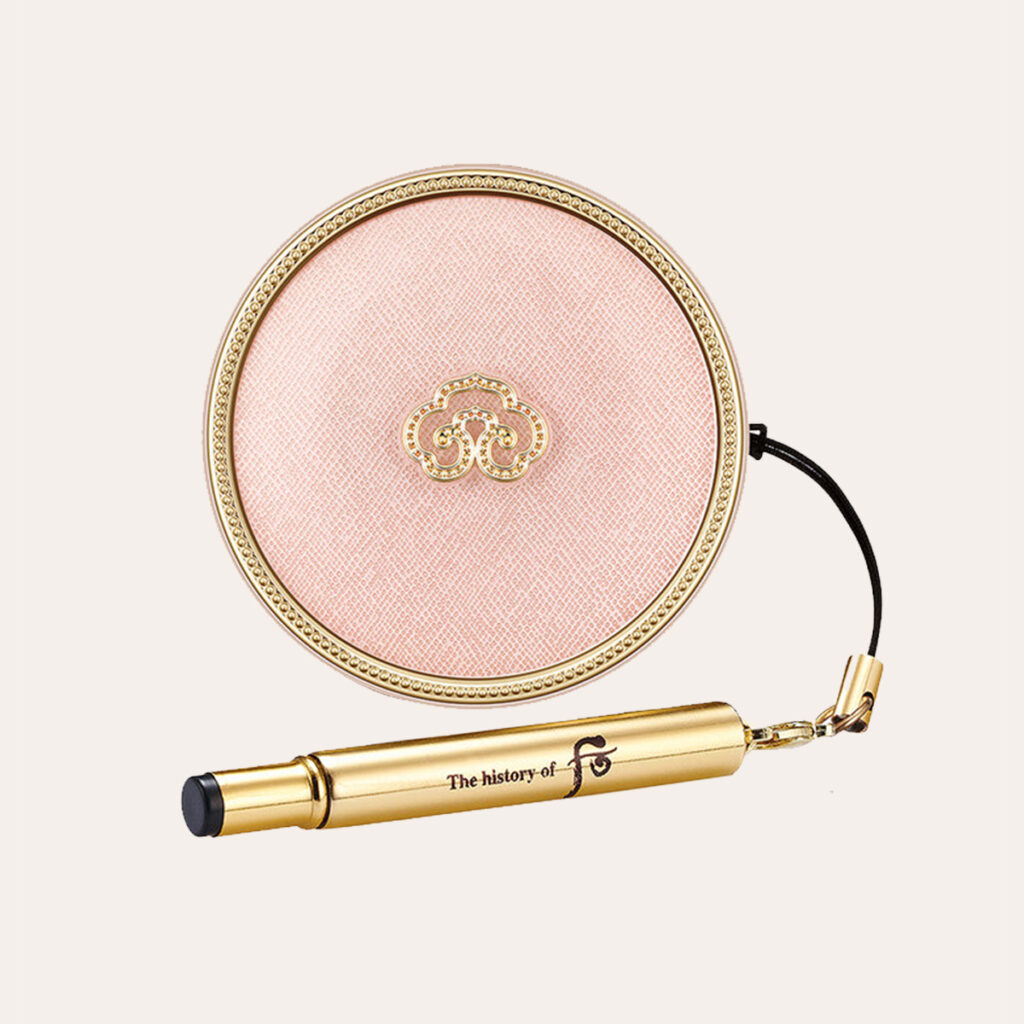
Gongjinhyang Mi Royal Lip Balm
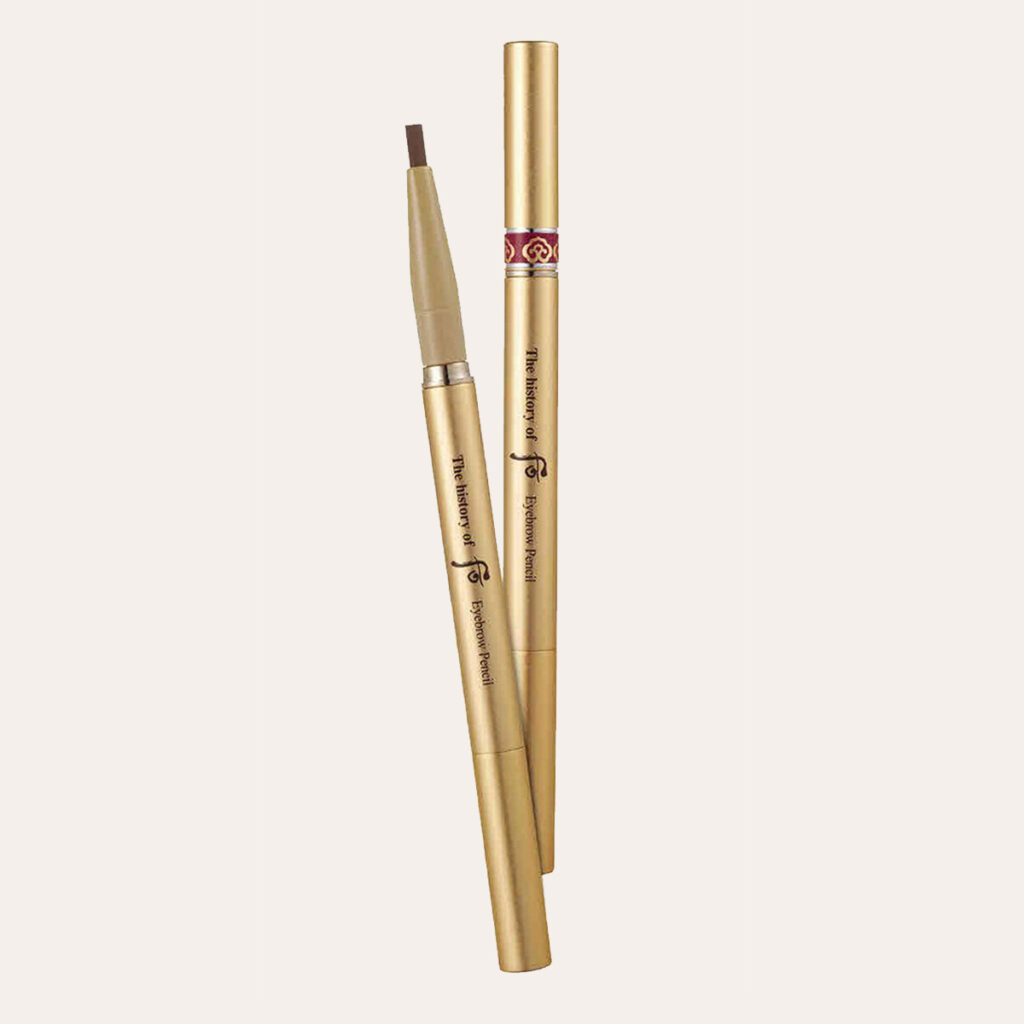
Gongjinhyang Mi Eyebrow Pencil
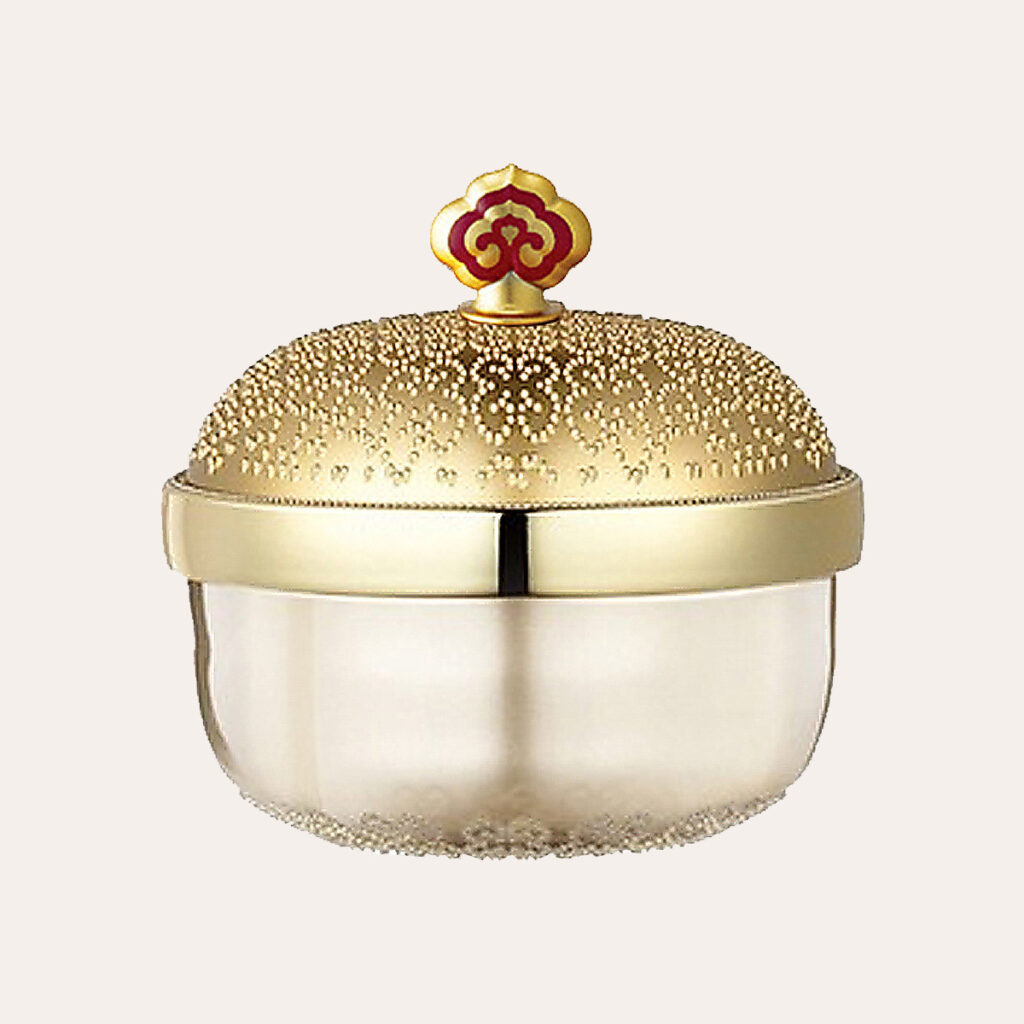
Gongjinhyang Mi Luxury Golden Base
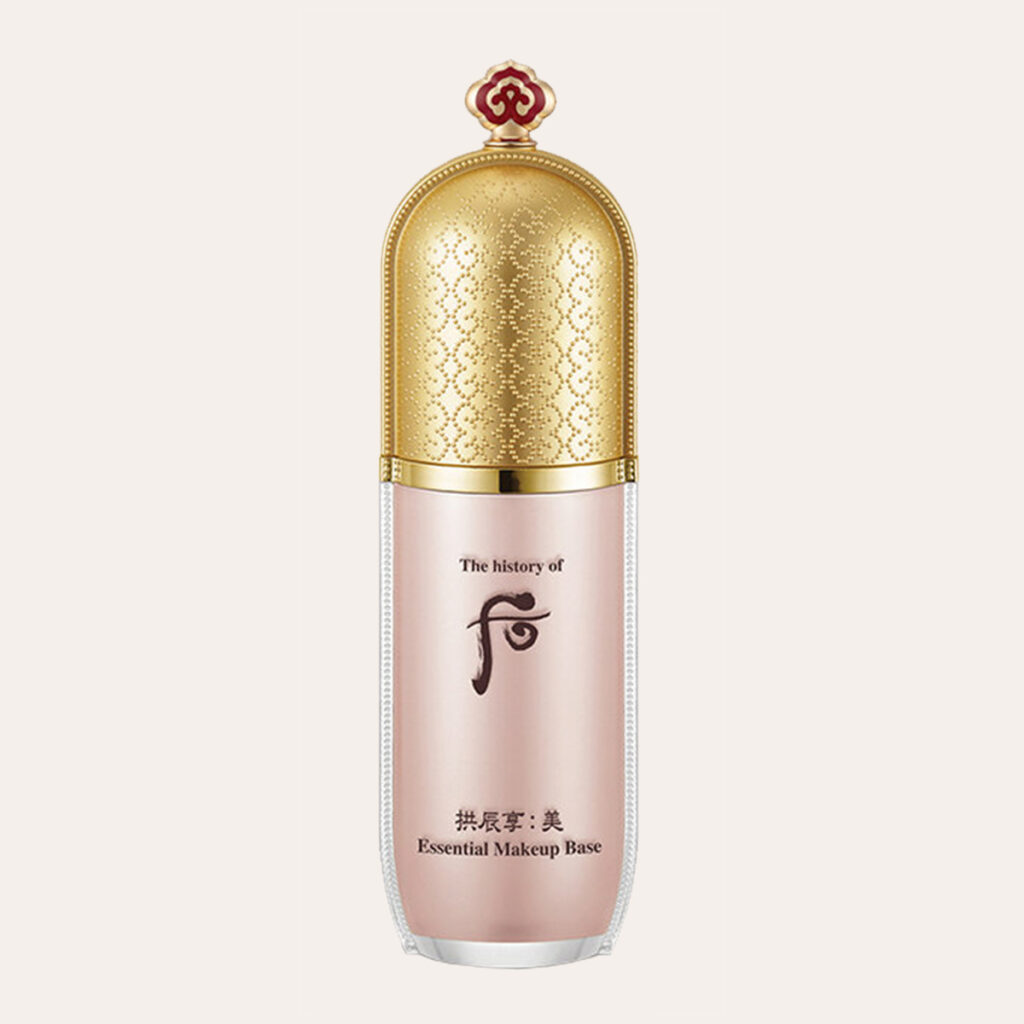
Gongjinhyang Mi Essential Makeup Base
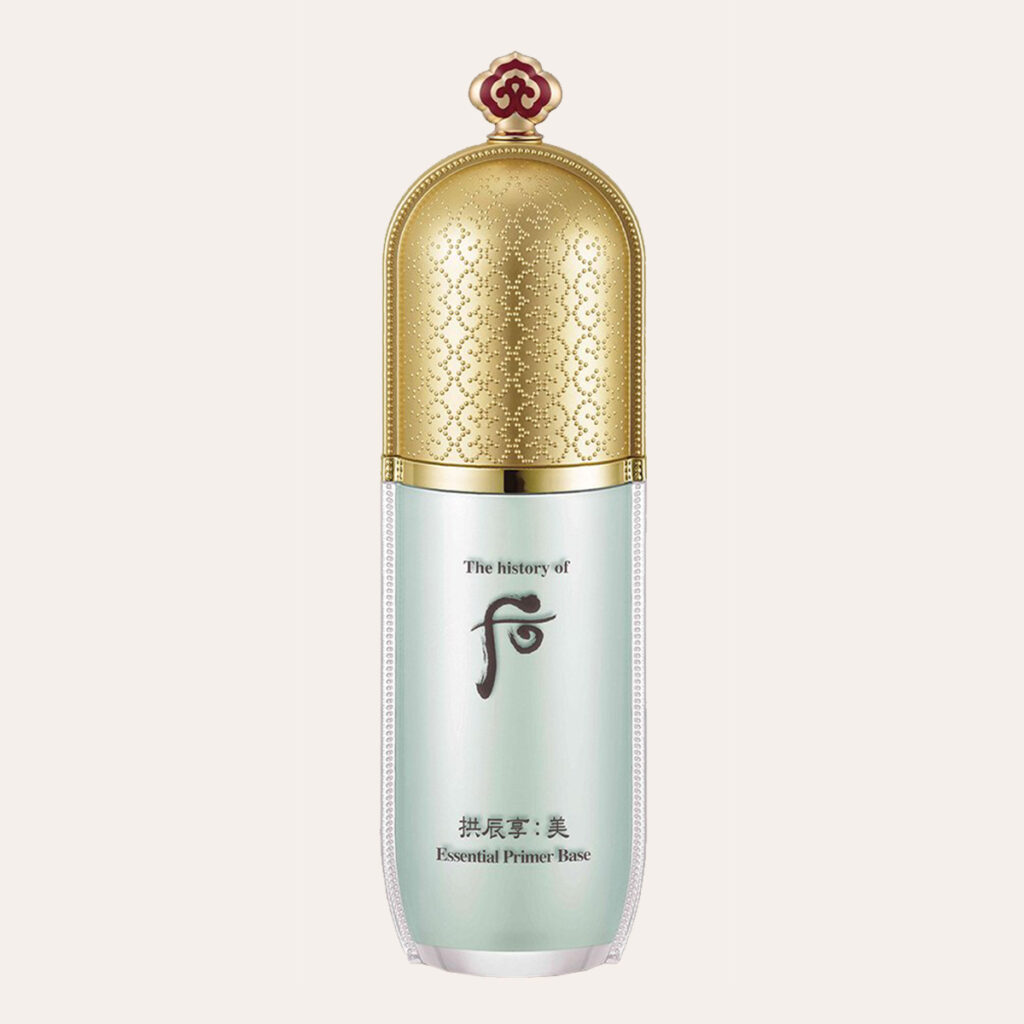
Gongjinhyang Mi Essential Primer Base
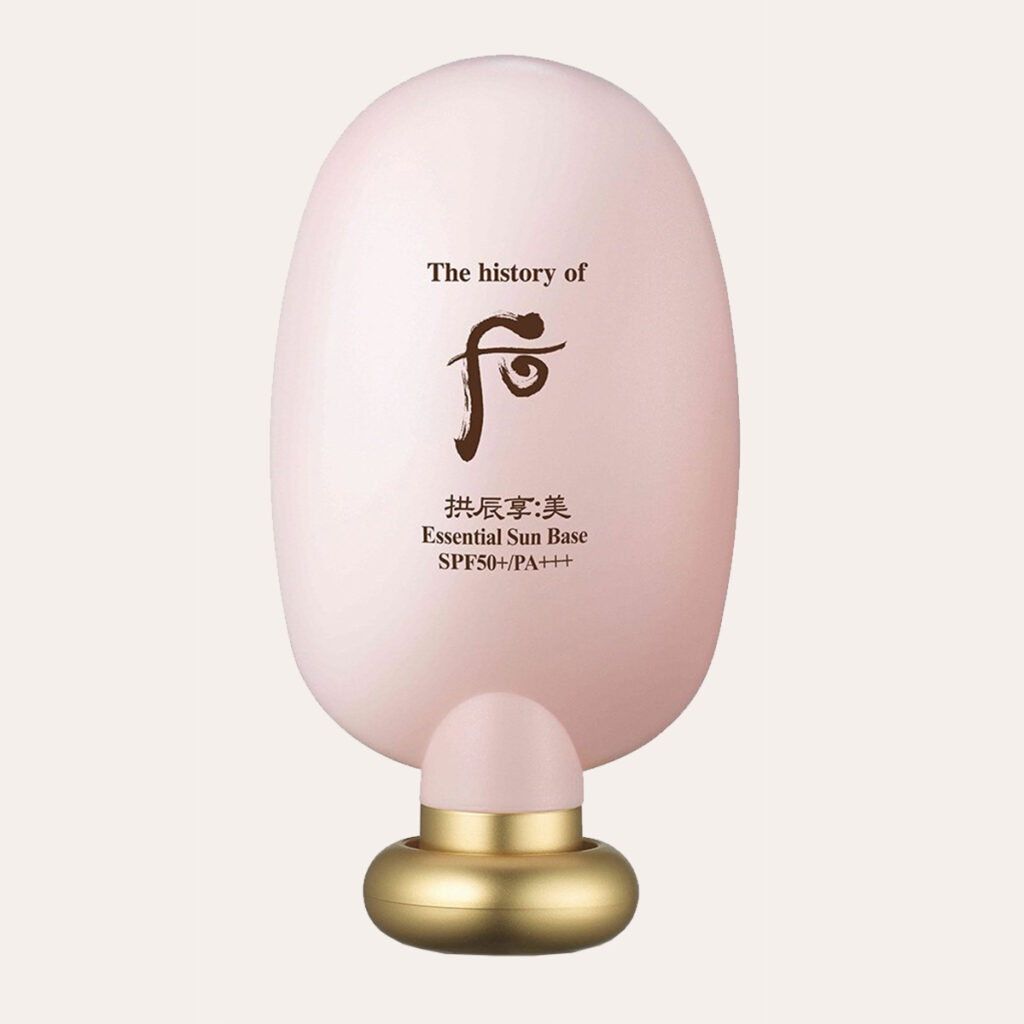
Gongjinhyang Mi Sun Screen Base SPF50+/PA+++
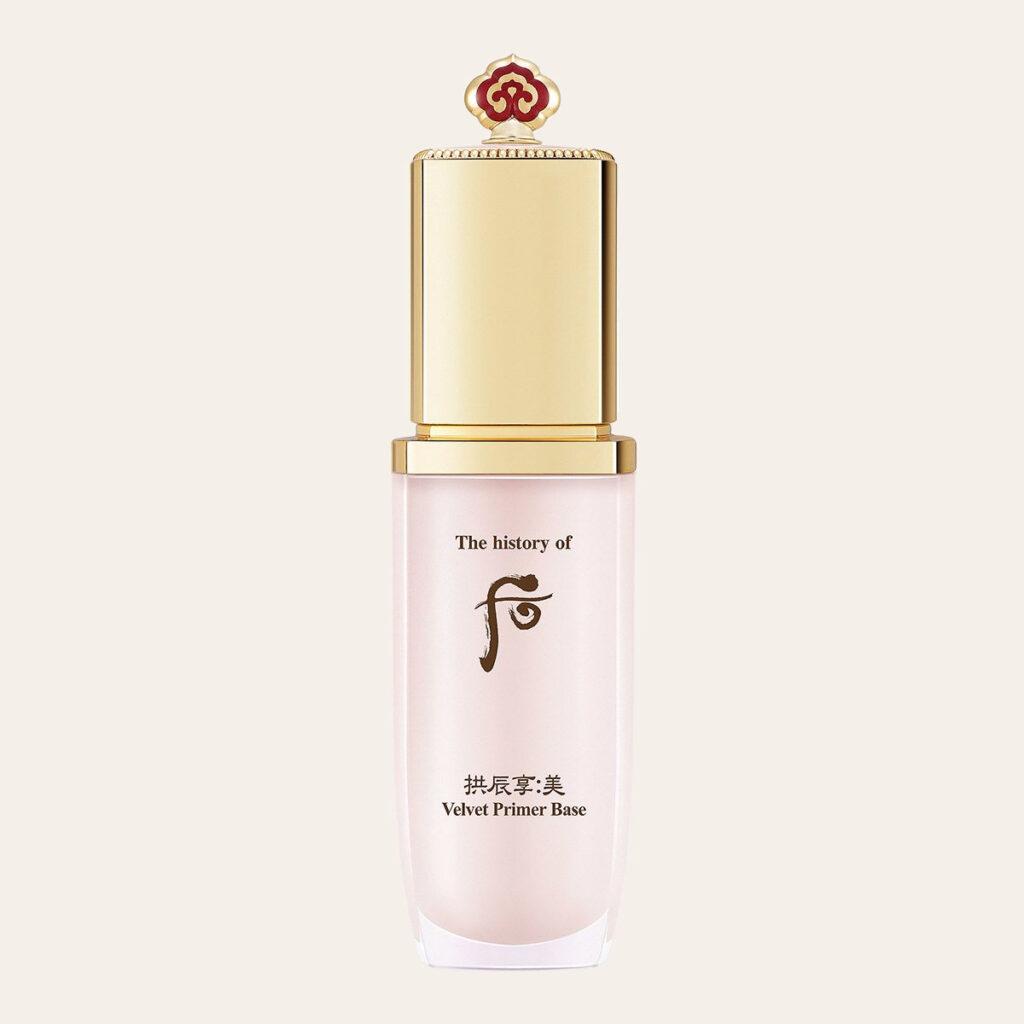
Gongjinhyang Mi Velvet Primer Base
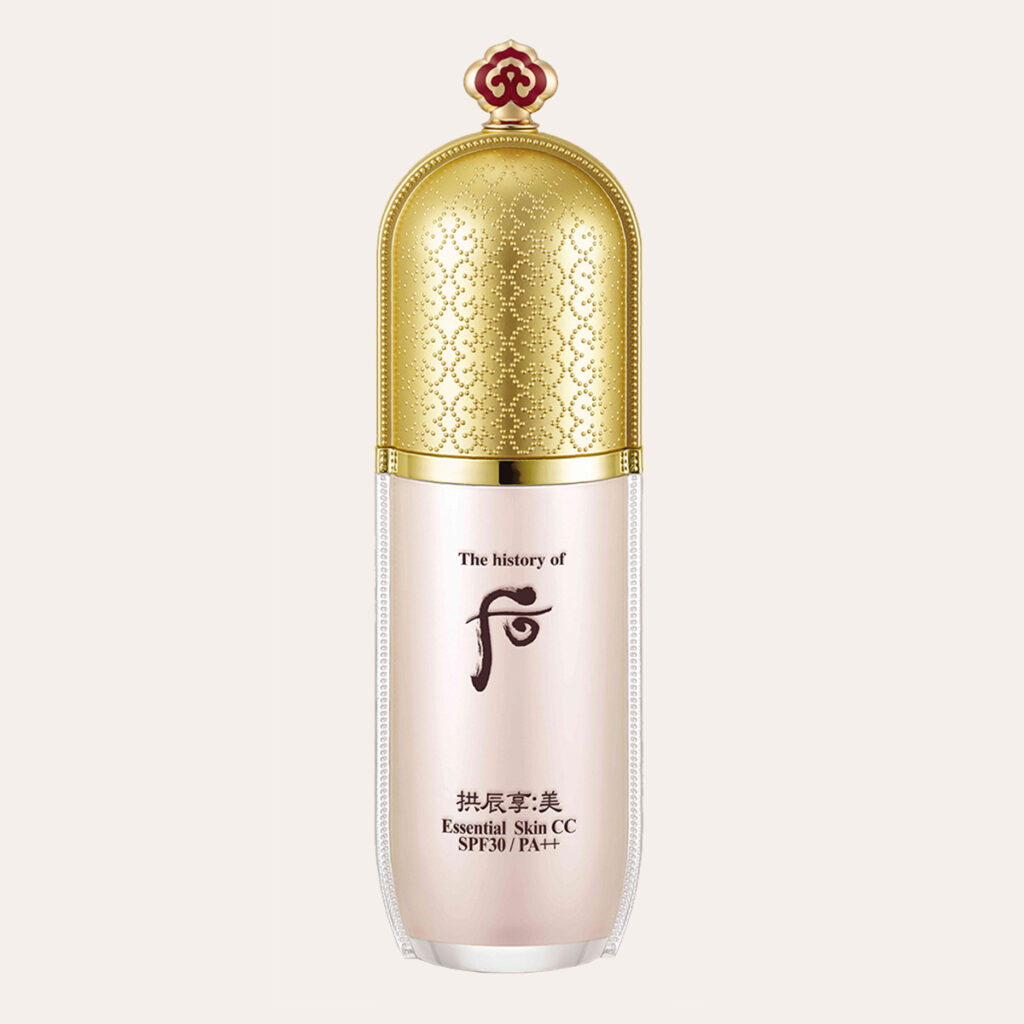
Gongjinhyang Mi Essential Skin CC SPF30/PA++
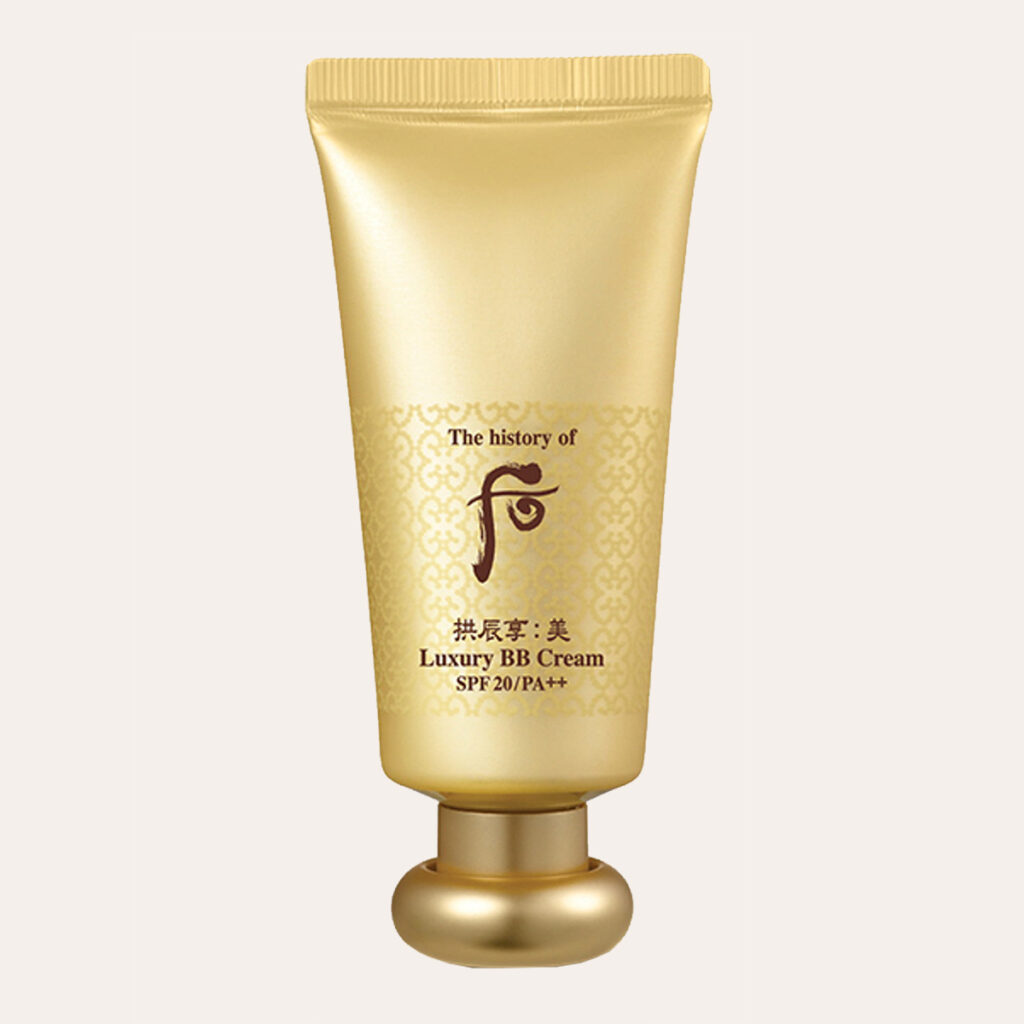
Gongjinhyang Mi Luxury BB Cream SPF20/PA++
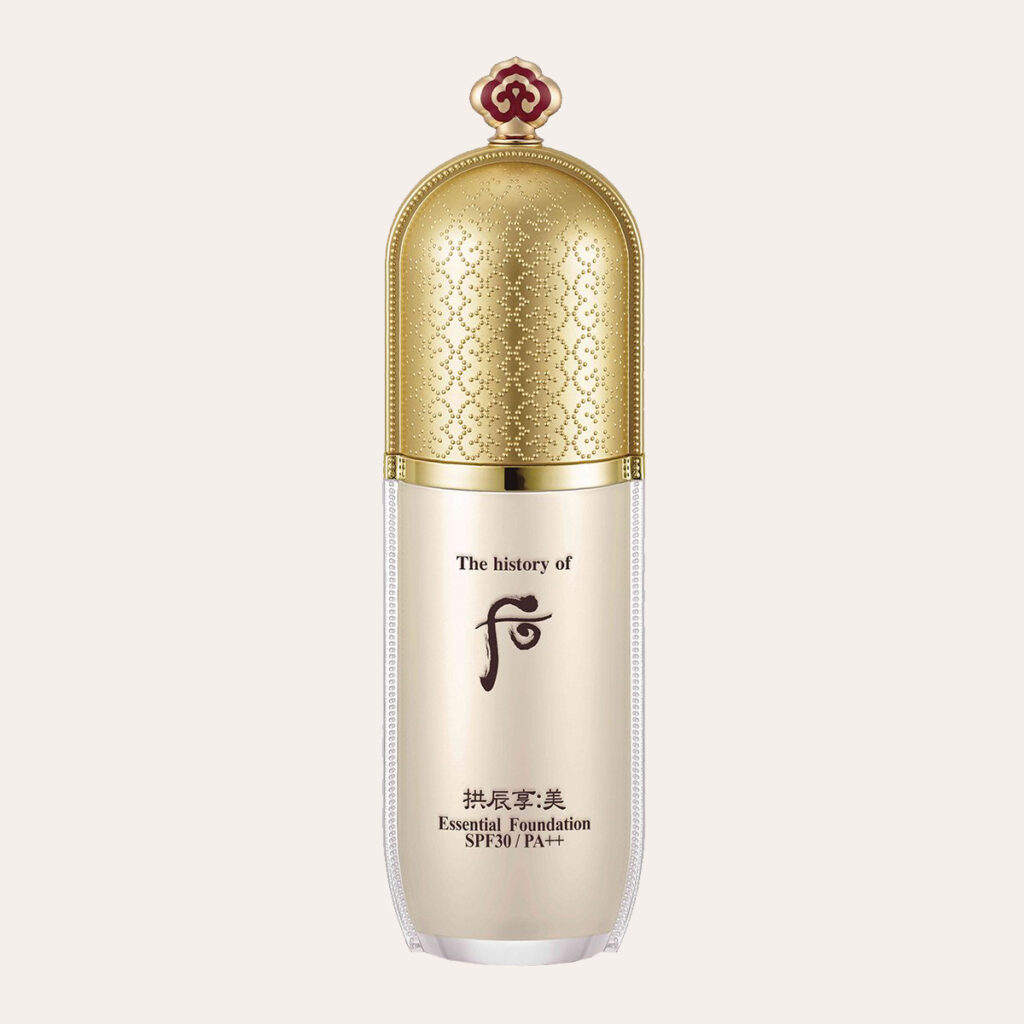
Gongjinhyang Mi Essential Foundation SPF30/PA++
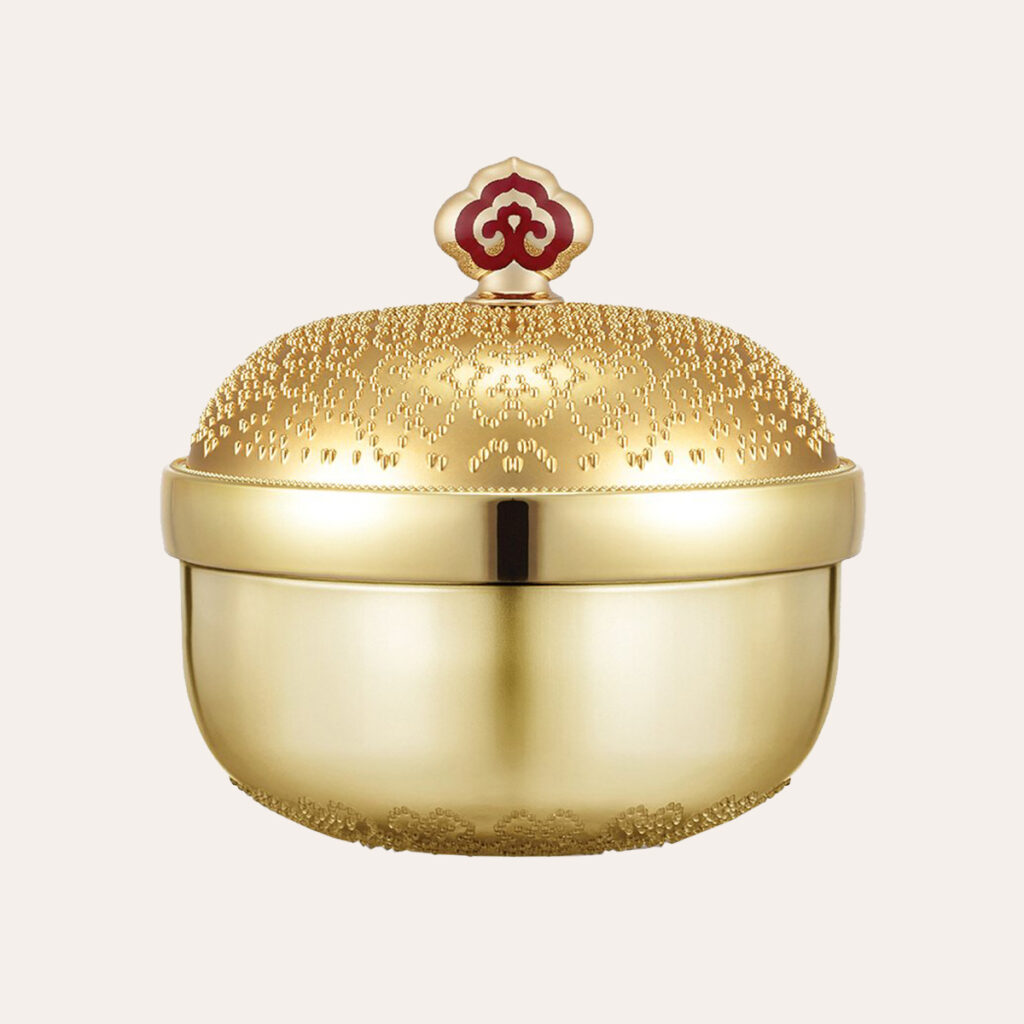
Gongjinhyang Mi Luxury Cream Foundation
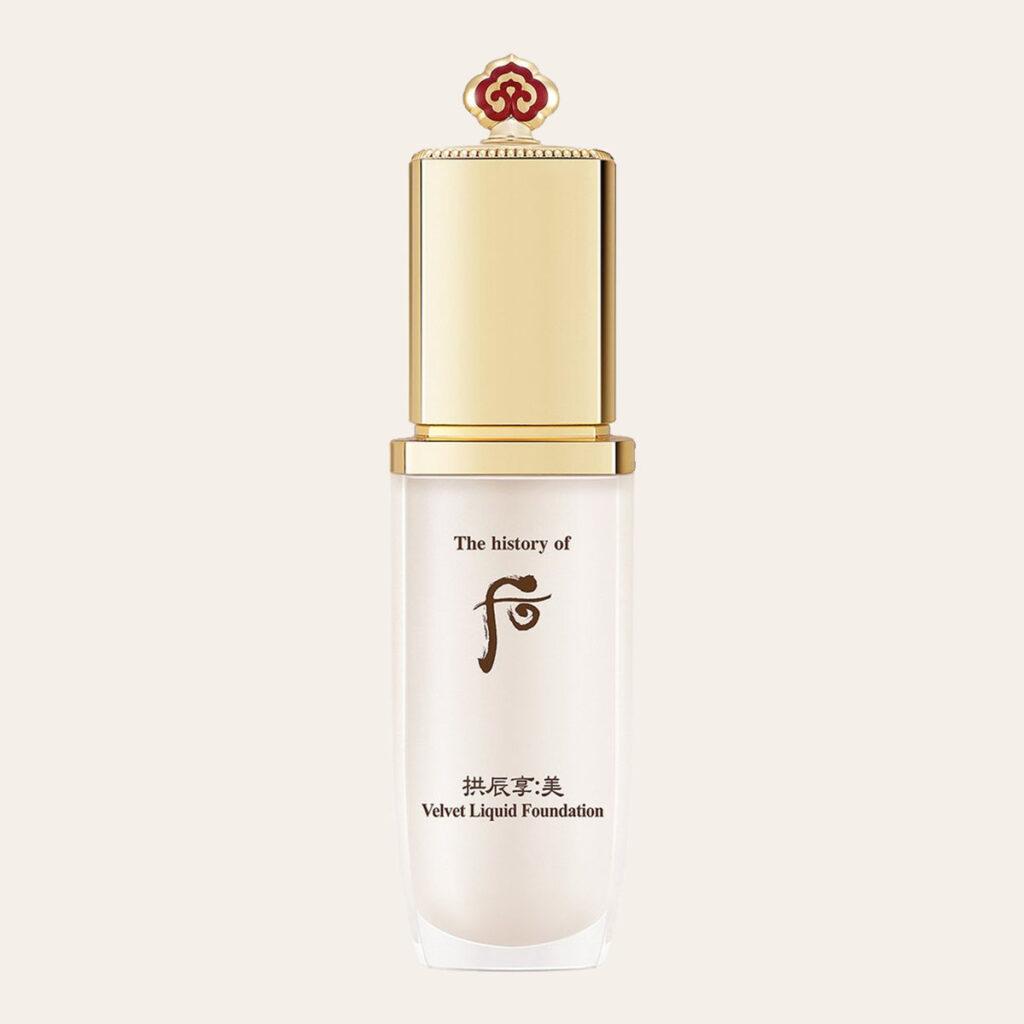
Gongjinhyang Mi Velvet Foundation SPF30/PA++
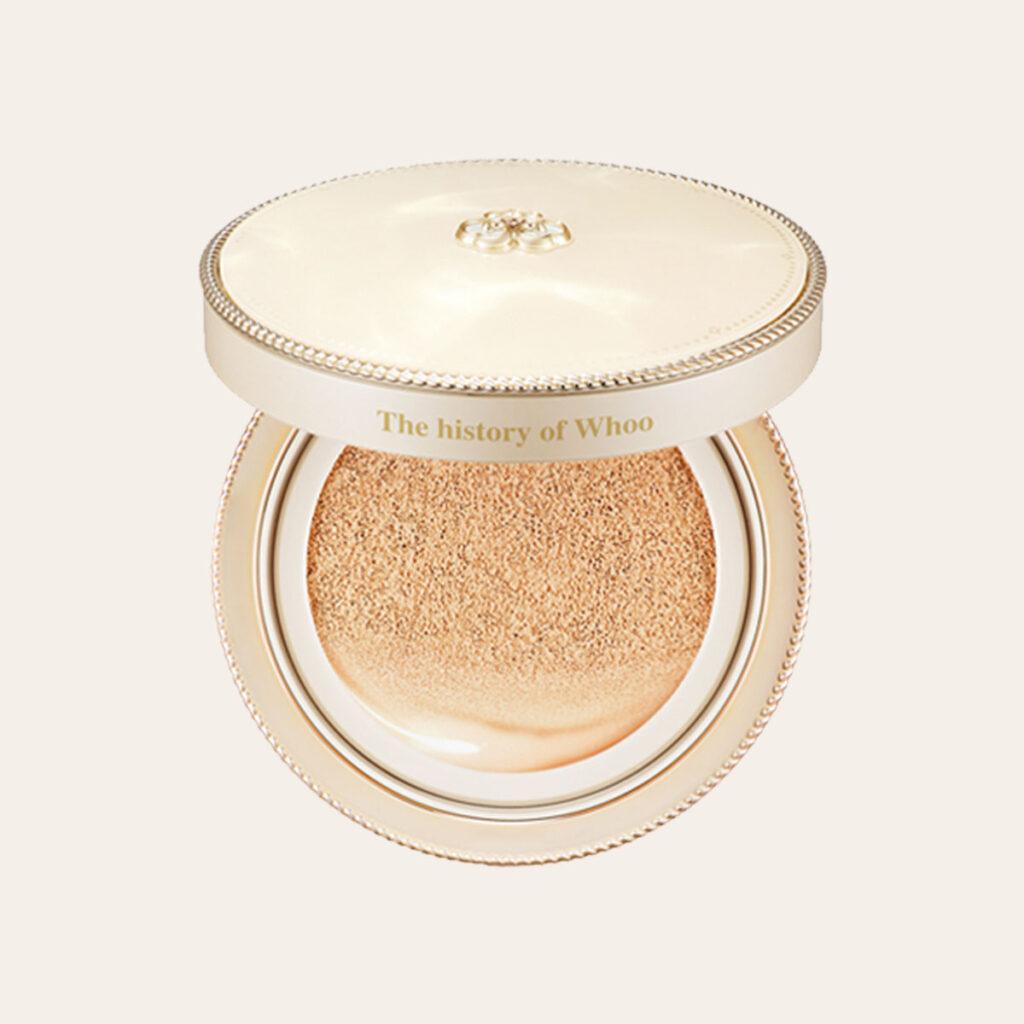
Gongjinhyang Mi Luxury Golden Cushion SPF50+/PA+++

Make sure to check out the Discount & Coupons page to access exclusive offers for major Korean skincare retailers.

1. 김은진. (2003). “나도 한번쯤 써보고 싶다! 피부 보약, 한방 화장품.” 레이디경향.
2. LG Household & Health Care. (2017). “1조 브랜드 행차요!“
3. “피부 미학의 결정체, 더 히스토리 오브 후.” (n.d.). Www.whoo.co.kr. Retrieved 20 May 2022 from www.whoo.co.kr/brand/secretClothes.jsp.
Sources: LG Household & Health Care (unless otherwise stated)
Translation: © 2022 Odile Monod
Disclaimer: The list above contains a combination of affiliate and non-affiliate links. If you make a purchase through one of my affiliate links, I will earn a small commission (paid by third party companies, not you). Commissions help fund the content production of the Monodist. For more information on my affiliate policy please refer to my About page. Some links are missing because the item is not available outside of Korea at the moment.